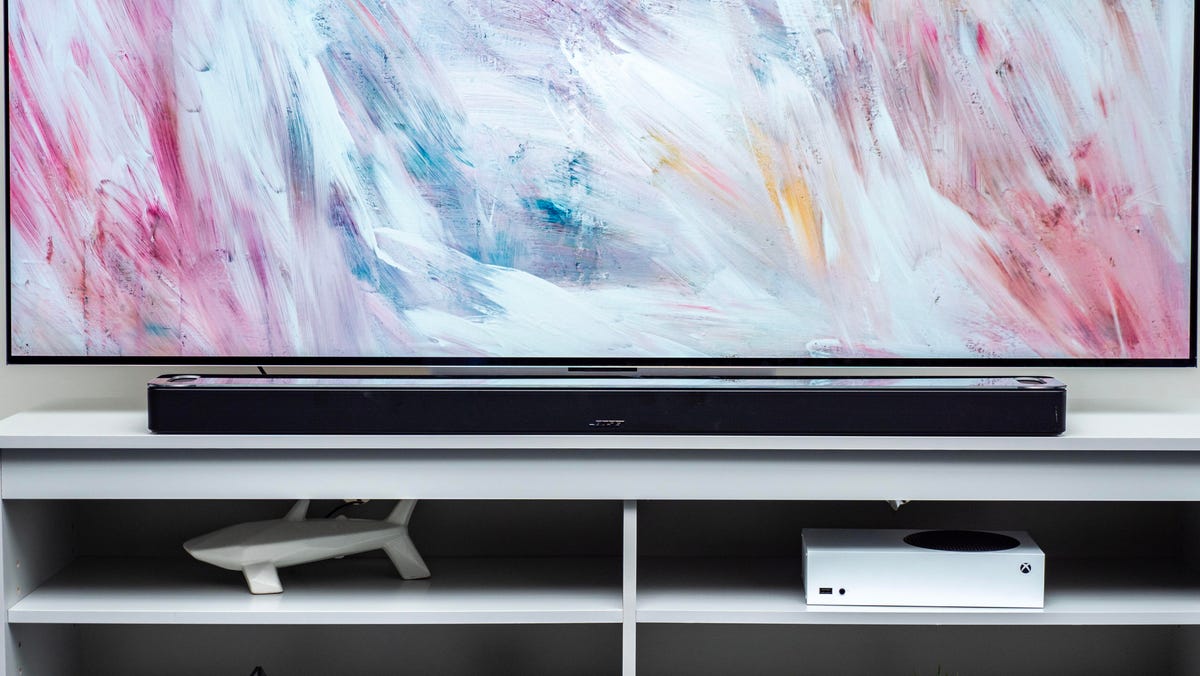
The Bose Smart Ultra Soundbar ($899) includes Dolby Atmos and onboard Amazon Alexa
Price
In the last few years, we’ve seen an explosion in the number of Atmos soundbars. Even better, the prices have finally dipped below $500, making them more affordable than ever. Likely the most important consideration when choosing a Dolby Atmos soundbar is how much it costs, as those equipped with the technology often cost up to $300 more than a regular soundbar. Still, there’s often an Atmos soundbar for every price point, starting at $400 on this list.
Atmos compatible vs. Atmos capable
There is a big difference between Atmos compatible and Atmos capable. Some of the soundbars can only read the standard (compatible) but not play it (capable), typically the cheaper models. While the Sonos Beam Gen 2 does a great job of simulating the height effects of Dolby Atmos, it pays to invest in a model with s dedicated height speaker system.
Wireless streaming
If you’re buying a new soundbar, then music streaming is an important consideration. This can take one of two main formats: Bluetooth, or Wi-Fi. Wireless streaming lets you play music from a multitude of sources, such as Spotify Connect on your phone or Apple AirPlay 2 on your computer, via your soundbar. Wi-Fi offers several upgrades over Bluetooth, including the ability to listen in multiple rooms and even control it with a Google Assistant or Alexa. Ultimately, the more choices for streaming technologies a soundbar has, the better.
Smart assistant and voice control
Many Dolby Atmos soundbars have a smart assistant onboard; these days, it’s usually only Amazon Alexa. Having a smart assistant can make controlling the soundbar easier and also help set the scene by dimming lights and closing curtains with voice control. If you use Google Assistant or Siri in your house, then most of these models can be controlled by them, too. Worries about privacy? Either turn off the soundbar’s microphone or get a model without one!
HDMI connections
At the bare minimum, a soundbar sold in 2024 should have at least one HDMI input and preferably more. The ability to connect multiple HDMI cables will help users with a large selection of sources (Xbox Series X, Apple TV, Nintendo Switch, Blu-ray player, etc.). There are notable exceptions to this rule. For example, the Sonos Ray only offers an optical output, but this is acceptable given that it’s most suitable for older or smaller TVs.
Subwoofer and surround speakers
Single-bar systems are great for smaller TVs, as their length allows for built-in stereo sound while still being compact enough to fit under your TV screen. But a soundbar-and-subwoofer combo is better suited for a living room home theater setup to produce that booming surround sound. For that reason, I take note of the size of the system and whether it offers wireless or wired peripherals. Most soundbars with subs are wireless, for instance, while systems with surround can be wired, as in the case of the Vizio Elevate.




















+ There are no comments
Add yours